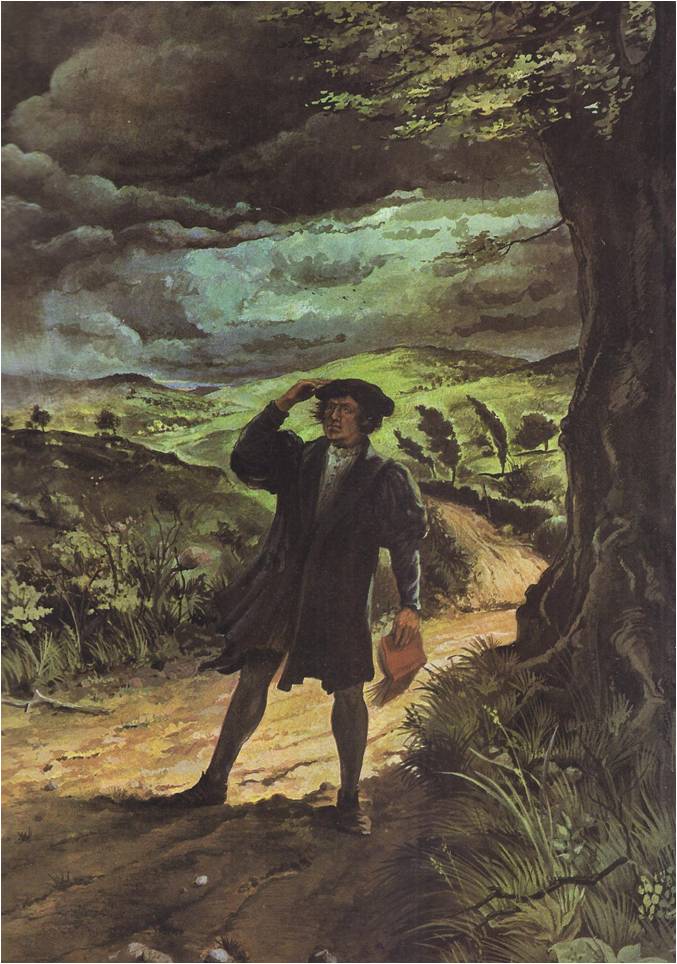ON A SULTRY JULY DAY IN 1505, a young law student, Martin Luther, was walking along a country road in Germany when a summer storm blew up. The air grew heavy and black clouds filled the sky. Before Luther could take shelter, thunder began to crash. A bolt of lightning struck the road almost at his feet. Thrown to the ground, he lay shaking, not certain whether he was alive or dead. “Help me, Saint Anne,” he cried, “help me and I will become a monk.” After a moment, Luther’s trembling stopped. He stood up, found that he was not hurt and continued his walk toward Erfurt, the town in which he attended the university. He did not forget his promise to Saint Anne. He spent a week or so thinking and making plans. Then he told his professors that he could come no more to their classes. He sold his books, bade farewell to his friends and went to the monastery of the Augustinian friars and said that it was his wish to become a monk. When Martin’s father, old Hans Luther, heard what his son had done, he was puzzled and angry. Hans had worked hard all of his life. Though his ancestors had been peasant farmers, he had managed to set himself up in a little business. But he was far from rich; he had scrimped and saved to send his son to school and to the university. He had long looked forward to the time when Martin would be a lawyer, a man of standing who would make his parents proud and earn the money to care for them in their old age. Now those plans were ruined. As a monk, Martin would never win fame or riches. Hans was furious and he wrote to Martin …
Read More »The End and the Beginning 378- 752
THE FIRST SIGN of the approaching Roman army was a thin column of dust. It rose like smoke from behind the jagged Thracian hills of Northern Greece, which sheltered the Visigoths’ encampment. Moments later, the Visigoths, or German barbarians, as the Romans called them, could feel the ground tremble with the tread of the imperial legions. The Romans were advancing, forty thousand strong, under the personal command of the Emperor Valens. Within the Visigoths’ barricade of wagons, all was confusion. Chieftains bellowed, calling their clans together. Sturdy Visigothic warriors dragged the wagons closer together in a protective circle. Horses neighed and whinnied as their riders leaped astride them; swords were unsheathed and lances brandished. A courier spurred away from camp to summon the main body of Visigothic cavalry, foraging at some distance. It was A.D. 378 and the battle of Adrianople was about to begin. Trumpets blared and the close-packed Romans marched straight toward the barbarian enemy. Suddenly, there was a thunder of hooves on the left. A great swarm of Visigothic horsemen, summoned from their foraging expedition, galloped over the hillside. They swooped down on the Romans, as an eyewitness described it, “like a thunderbolt which strikes on a mountain top and dashes away all that stands in its path.” More horsemen poured in from the right and the front, pressing the tightly massed Romans into a death trap. The men of the legions could scarcely raise their arms to strike a blow. Again and again the horsemen charged, brandishing lance and sword. When night fell, forty thousand Roman soldiers lay dead upon the field, together with the grand master of the infantry and cavalry, the count of the palace, thirty-five commanders of horse and foot corps and the Emperor Valens himself. This great defeat was to mark the …
Read More »

